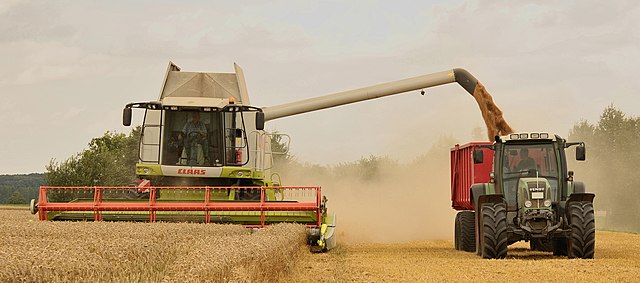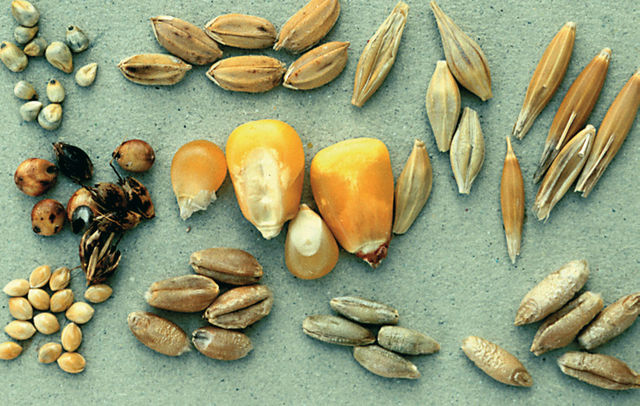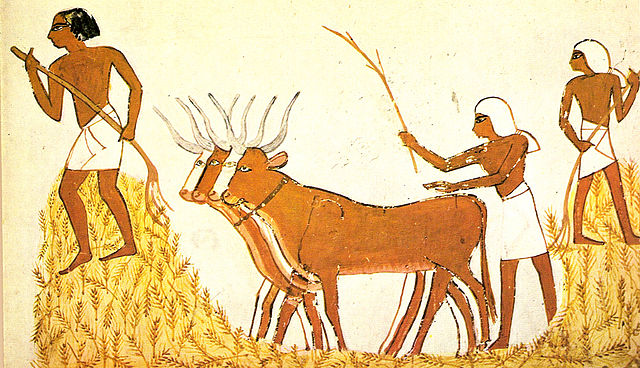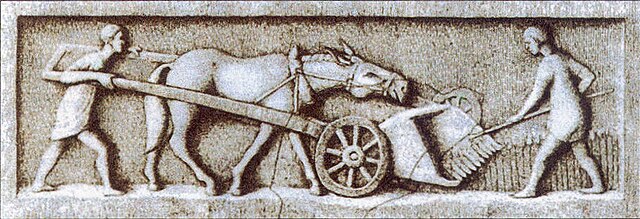A gristmill grinds cereal grain into flour and middlings. The term can refer to either the grinding mechanism or the building that holds it. Grist is grain that has been separated from its chaff in preparation for grinding.
Allied Mills flour mill on the banks of the Manchester Ship Canal in North West England
Senenu Grinding Grain, c. 1352–1336 BC. The royal scribe Senenu appears here bent over a large grinding stone. This unusual sculpture seems to be an elaborate version of a shabti, a funerary figurine placed in the tomb to work in place of the deceased. Brooklyn Museum.
The basic anatomy of a millstone; this diagram depicts a runner stone.
Grinding mechanism in an old Sweden-based flour mill
A cereal is a grass cultivated for its edible grain. Cereals are the world's largest crops, and are therefore staple foods. They include rice, wheat, rye, oats, barley, millet, and maize. Edible grains from other plant families, such as buckwheat and quinoa are pseudocereals. Most cereals are annuals, producing one crop from each planting, though rice is sometimes grown as a perennial. Winter varieties are hardy enough to be planted in the autumn, becoming dormant in the winter, and harvested in spring or early summer; spring varieties are planted in spring and harvested in late summer. The term cereal is derived from the name of the Roman goddess of grain crops and fertility, Ceres.
Harvesting a cereal with a combine harvester accompanied by a tractor and trailer.
Cereal grains: (top) pearl millet, rice, barley (middle) sorghum, maize, oats (bottom) millet, wheat, rye, triticale
Threshing of grain in ancient Egypt
Roman harvesting machine








